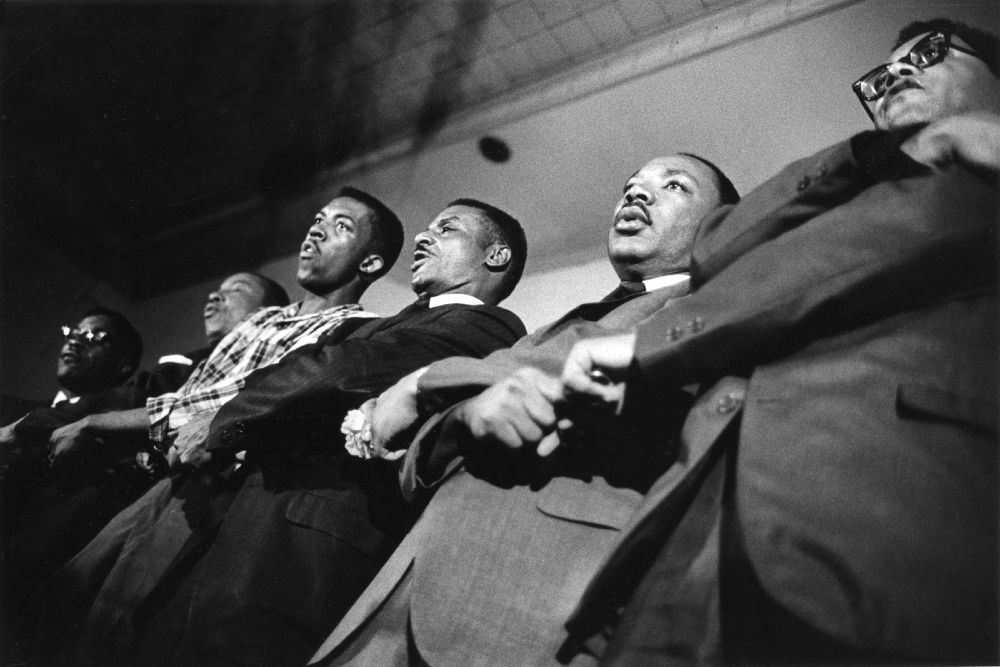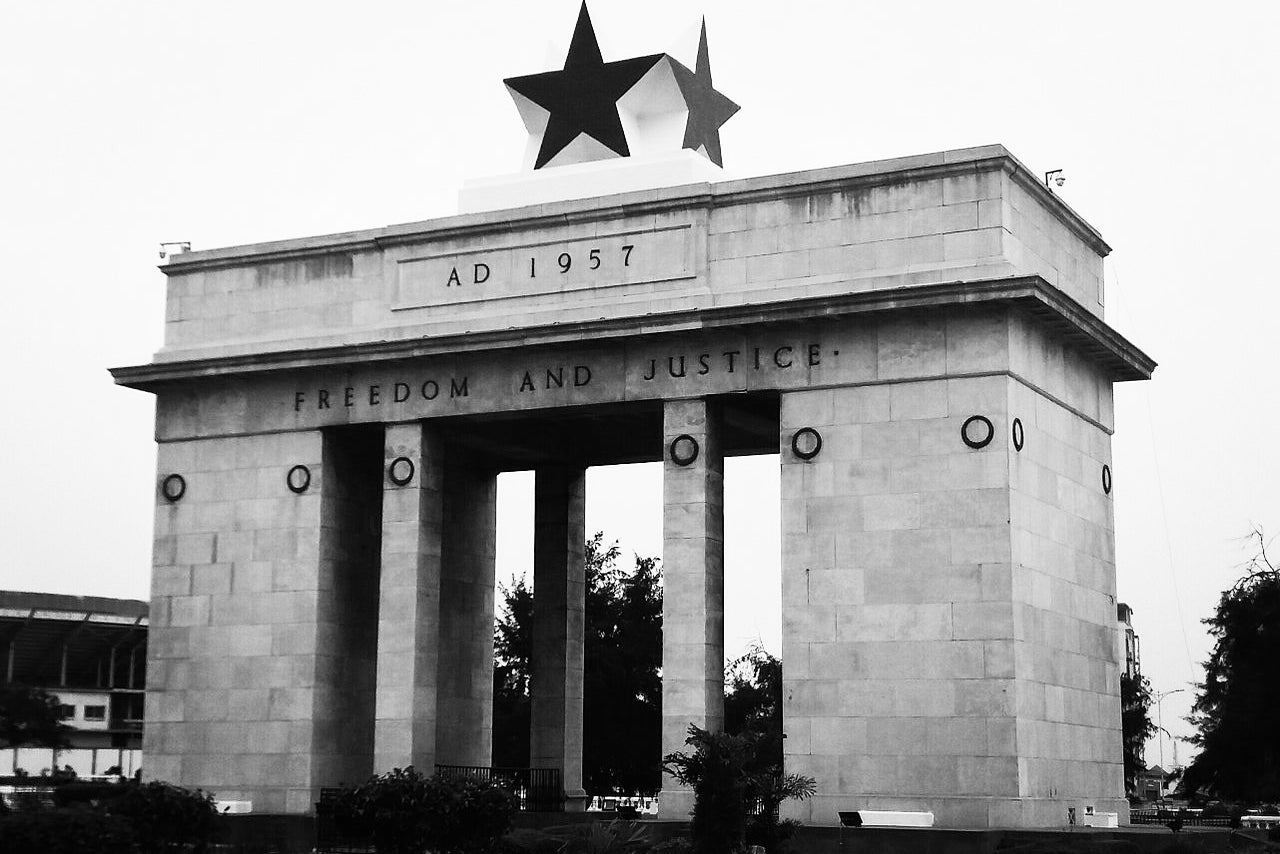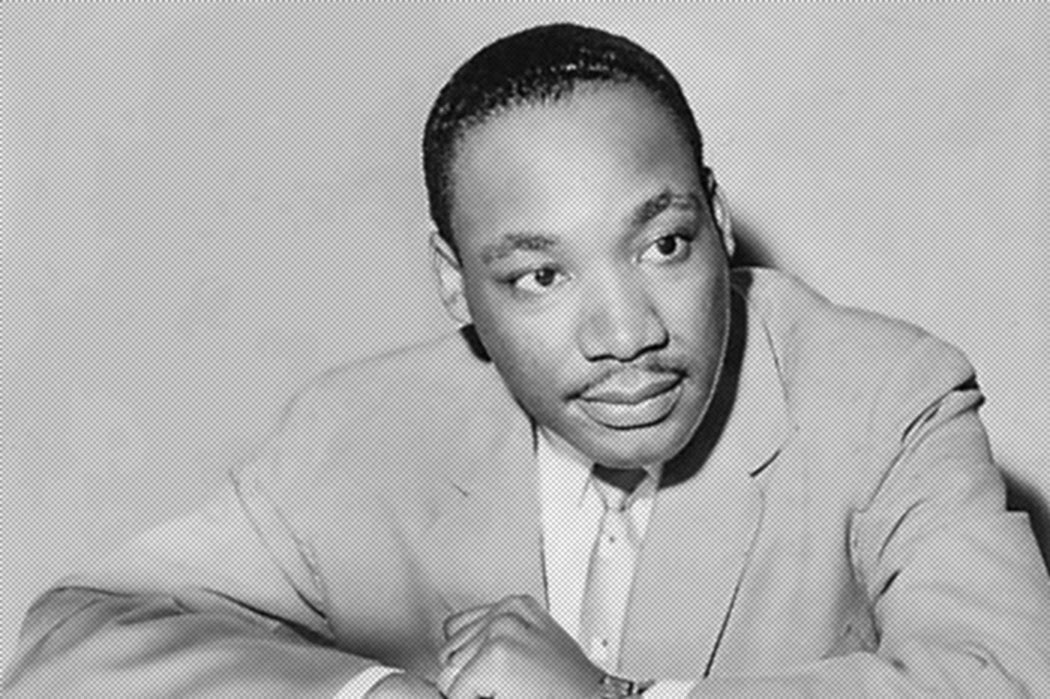Dr. Martin Luther King Jr. had just returned from Africa ecstatic. Alongside African American leaders such as A. Philip Randolph, Adam Clayton Powell, and Ralph Bunche, King was formally invited by Prime Minister Kwame Nkrumah to attend the independence ceremony for Ghana. It was March of 1957, and what he witnessed in Ghana would leave King reinvigorated.
“I could hear that old Negro spiritual once more crying out: ‘Free at last, free at last, Great God Almighty, I’m free at last,’” he told his congregation in his “Birth of a New Nation” sermon in Alabama. “I stood there thinking about so many things. Before I knew it, I started weeping. I was crying for joy.”
A month before his trip, King was disillusioned and in constant pain. Only a few months earlier, the now legendary Montgomery bus boycott successfully concluded. But, as the scholar Josslyn Jeanine Luckett reflects, in a fit of despair King wrote to President Eisenhower to protest the “extreme violence” that emerged in its aftermath.
“In Alabama… men and women, black and white, sitting peacefully in buses have been attacked by snipers. A fortnight ago, a 15 year old Negro girl was brutally beaten,” King wrote.
Was the American south going to ever get rid of white supremacist violence? As Kevin Gaines, a professor of Africana studies, notes, it had only been three years since Brown v. Board of Education deemed segregation unconstitutional. At the time, the United States had neither a roadmap to desegregate nor the political will. Patient though he was, King was losing hope.
But the opportunity arose for King to witness the fruits of Kwame Nkrumah’s non-violent struggle to rid the Gold Coast colony of West Africa from the British. With the financial and moral support of the Montgomery Improvement Association and Dexter Avenue Baptist Church, King went to Ghana to honor the first African independence ceremony. Standing next to Coretta King, he wept as he saw the Union Jack fall and the new flag of Ghana being raised. King was overcome with the belief that, in the depth of his very being, the universe was calling for black liberation.
“Ghana tells us that the forces of the universe are on the side of justice… An old order of colonialism, of segregation, discrimination is passing away now. And a new order of justice, freedom and good will is being born,” he said.
That was the first time King publicly proclaimed his cry of freedom: “Free at last.” But we often remember this phrase being uttered as we reminisce on the day he stood on the steps of the Lincoln Memorial, August 28, 1963. This association, it must be said, is deliberate.
National narratives always redeem the nation. They tell us that we are on a constant path towards progress, that every milestone is purely American, that Martin Luther King Jr. had a dream and America was willing to listen to it. But rarely do high school students in the U.S. get to hear about the King who conceptually linked the old order of colonialism in Africa with the African American struggle against segregation. The civil rights movement undoubtedly falls within a legacy of American resistance, but it also glanced across the Atlantic for inspiration. Civil rights activists were profoundly affected by decolonization in Africa.
The Student Movement Sojourns to Africa
In 1960, Ella Baker was sent by the Southern Christian Leadership Conference (King’s organization) to help found the Student Non-Violent Coordinating Committee (SNCC) as part of ongoing efforts to secure racial equality through non-violent direct action. King had already articulated his inspiration from Africa, but Ella Baker went further. Miss Baker, as she was referred to by many of the students she mentored, once told her biographer that she believed “that the liberation movements in Africa and other parts of the world spurred on the U.S. Civil Rights movement.”
Indeed, as the historian Fanon Che Wilkins argues, the very formation of SNCC was catalysed by African independence movements. And its founding conference, Julian Bond, who helped establish the organization, noted that SNCC activists openly stated that, “We identify ourselves with the African Struggle as a concern for all mankind.”

Under the influence of the African National Congress in South Africa, SNCC chairman John Lewis even said, at the March on Washington in 1963, that, “One man, one vote is the African cry. It must be ours!” The SNCC fought for civil rights in America, but it saw its fight as part of a global fight for black dignity. Black dignity meant a step closer to universal emancipation, and these activists were radical humanists.
Only a year after it was founded, in 1961, the SNCC accepted James Forman as its Executive Secretary. Like many of his colleagues, Forman was a young African American who was inspired by the struggle for decolonization in Africa. Over the course the past four years, he had seen the white supremacist mobs that surrounded the “Little Rock Nine,” the young African American students who responded to a federal district court mandate by trying to enroll in a central high school. And he witnessed the attacks on non-violent civil rights activists who pushed for desegregation. He paid close attention to apartheid in South Africa, believing that it was intimately tied to oppression in the American south. He questioned whether non-violence was even possible, and like many within his milleu, wasn’t so sure whether or not the Gandhian principles that influenced King would help the black struggle in the U.S.
But like King, he too had learned from Ghana. “Nkrumah was the person [who] convinced me that nonviolent action might be possible” in the U.S., Forman recalled.
It was under the leadership of young activists like Forman and Lewis that the SNCC evolved. From 1960 to 1964, the SNCC was the principal organization that registered black voters to vote. It established freedom schools and organized a “freedom summer” for white allies to come to the south to help document the non-violent struggle for voting rights.
The SNCC planned sit-ins to desegregate lunch counters, and by 1964 it even helped form the Mississippi Freedom Party, which unsuccessfully sought to be seated at the Democratic National Convention. The SNCC was arguably the most transformative student movement in the history of the United States, and as a result, by 1964, it was among the most exhausted.
In 1964, with the help of the singer and actor Harry Belafonte, the SNCC secured a three week invitation to the new country of Guinea, West Africa, as official guests by President Sekou Toure. The organization chose a delegation that included Lewis, Forman, and others. According to Wilkins (the historian), the SNCC activists attended the opening of a new athletic stadium, visited a printing plant named after the assassinated Congolese Premier Patric Lumumba, and toured several factories in the aspiring socialist state.
James Forman called the trip the “culmination” of his life. As a “black continent,” he thought that Africa could be a beacon to help blacks “achieve political power in the United States.”
The young students were mesmerized. In the South, they had to risk death to eat at the same lunch counter as their white counterparts, yet in Africa they saw blacks demonstrating the capacity for self-governance. Shortly after their trip to Guinea, most of the SNCC delegates returned to the U.S. to commence their organizing duties. But Lewis, along with the activist Donald Harris, continued his tour across Africa, much as Malcolm X had done that very same year.

Donald Harris dreamed of seeing the founding of a new African country. He and Lewis travelled to Liberia, Ghana (where they met W.E.B. and Shirley Graham Du Bois), and Kenya (where they met Malcolm X) before making their way to what was then called Northern Rhodesia to watch the independence ceremony of Zambia.
Lewis talked with excitement about the African exiles in Ghana who found solace in the newly independent country. He documented his meetings with “exiles from… South Africa, [who] built, began, sustained, and continued revolutions against colonial, imperial and racist powers.” In Kenya, after meeting Malcolm X, he realized that “it was clear that Africa was doing for [Malcolm] the same thing that it was doing for us—providing a frame of reference that was both broadening and refreshing.”
As Wilkins insists:
Lewis and Harris had come to Africa questioning the utility and political effectiveness of the Civil Rights Movement, yet still committed to its fundamental principles and goals. Their sojourn on the continent exposed them to a larger world infused with new possibility and hope, thus solidifying Africa’s symbolic and political importance to struggles for freedom in the United States and around the world.
The civil rights movement King envisioned was surely American. But it was also, in its own particular way, African.







